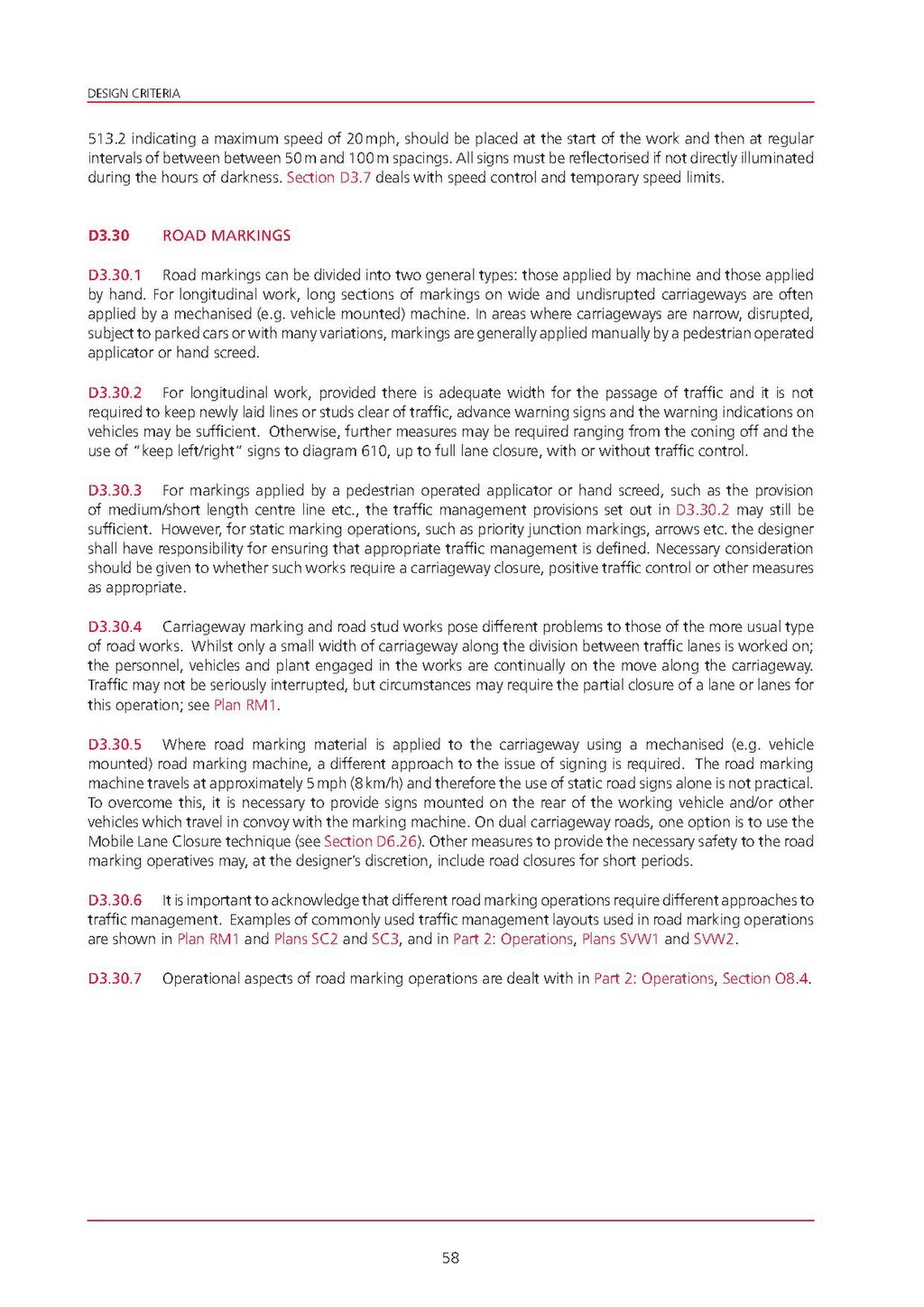513.2 indicating a maximum speed of 20mph, should be placed at the start of the work and then at regular intervals of between between 50 m and 100 m spacings. All signs must be reflectorised if not directly illuminated during the hours of darkness. Section D3.7 deals with speed control and temporary speed limits.
D3.30ROAD MARKINGS
D3.30.1 Road markings can be divided into two general types: those applied by machine and those applied by hand. For longitudinal work, long sections of markings on wide and undisrupted carriageways are often applied by a mechanised (e.g. vehicle mounted) machine. In areas where carriageways are narrow, disrupted, subject to parked cars or with many variations, markings are generally applied manually by a pedestrian operated applicator or hand screed.
D3.30.2 For longitudinal work, provided there is adequate width for the passage of traffic and it is not required to keep newly laid lines or studs clear of traffic, advance warning signs and the warning indications on vehicles may be sufficient. Otherwise, further measures may be required ranging from the coning off and the use of "keep left/right" signs to diagram 610, up to full lane closure, with or without traffic control.
D3.30.3 For markings applied by a pedestrian operated applicator or hand screed, such as the provision of medium/short length centre line etc., the traffic management provisions set out in D3.30.2 may still be sufficient. However, for static marking operations, such as priority junction markings, arrows etc. the designer shall have responsibility for ensuring that appropriate traffic management is defined. Necessary consideration should be given to whether such works require a carriageway closure, positive traffic control or other measures as appropriate.
D3.30.4 Carriageway marking and road stud works pose different problems to those of the more usual type of road works. Whilst only a small width of carriageway along the division between traffic lanes is worked on, the personnel, vehicles and plant engaged in the works are continually on the move along the carriageway. Traffic may not be seriously interrupted, but circumstances may require the partial closure of a lane or lanes for this operation, see Plan RM1.
D3.30.5 Where road marking material is applied to the carriageway using a mechanised (e.g. vehicle mounted) road marking machine, a different approach to the issue of signing is required. The road marking machine travels at approximately 5 mph (8 km/h) and therefore the use of static road signs alone is not practical. To overcome this, it is necessary to provide signs mounted on the rear of the working vehicle and/or other vehicles which travel in convoy with the marking machine. On dual carriageway roads, one option is to use the Mobile Lane Closure technique (see Section D6.26). Other measures to provide the necessary safety to the road marking operatives may, at the designer’s discretion, include road closures for short periods.
D3.30.6 It is important to acknowledge that different road marking operations require different approaches to traffic management. Examples of commonly used traffic management layouts used in road marking operations are shown in Plan RM1 and Plans SC2 and SC3, and in Part 2: Operations, Plans SVW1 and SVW2.
D3.30.7 Operational aspects of road marking operations are dealt with in Part 2: Operations, Section 08.4.
58
